Barcelona the Essentials and Secrets of the “Eixample”
In the heart of Barcelona lies the Eixample district, where the past seamlessly intertwines with the present. This area is a treasure trove waiting to be discovered as visitors wander the wide avenues lined with Modernista facades. A sense of history and innovation fills the air, but what truly sets Eixample apart are the hidden secrets that lie beyond the surface.
From intricate architectural details to stories of urban planning, the Eixample unveils a world of intrigue and wonder, offering a glimpse into Barcelona’s soul. Explore further to unravel the essentials and uncover the mysteries that make this district a must-see for any discerning traveler.
Key Points
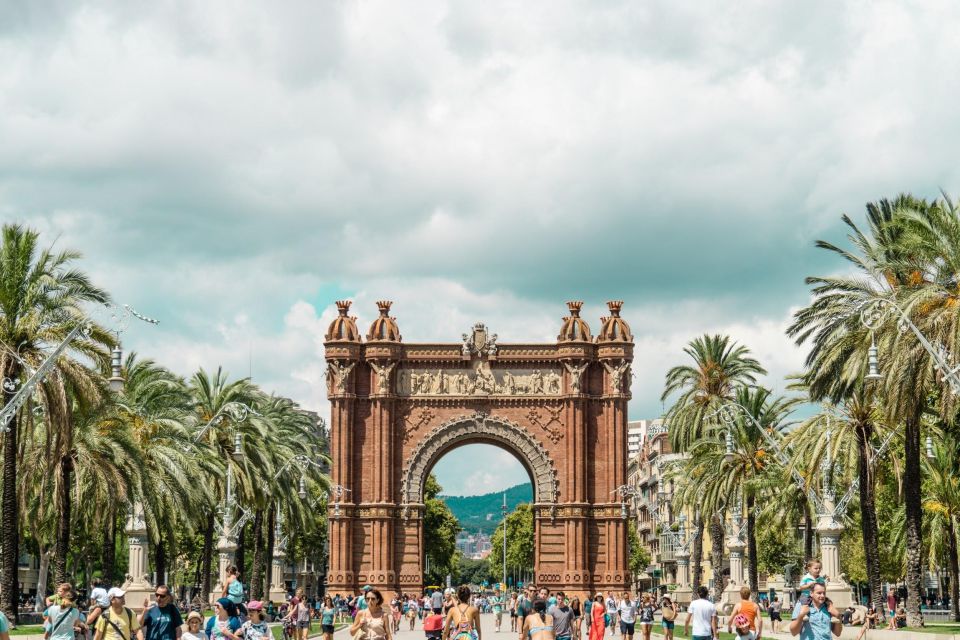
- Barcelona’s Eixample district combines architectural marvels with hidden gems.
- Urban planning innovations like Plan Cerda shape Eixample’s efficient and charming layout.
- Lluís Domènech I Montaner’s legacy adds elegance and Catalan identity to the district.
- Eixample’s evolution reflects a harmonious blend of traditional and modern influences.
Plan Cerda: Barcelona’s Urban Visionary
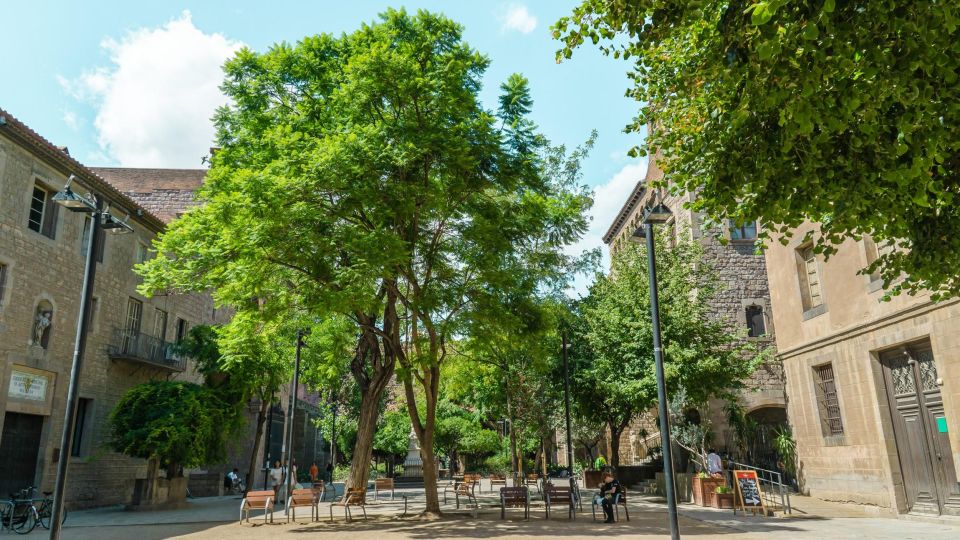
Plan Cerda, designed by Ildefons Cerdà, stands as a testament to Barcelona’s visionary urban planning that has shaped the city’s landscape for over a century. This urban development project, initiated in the mid-19th century, introduced a groundbreaking layout characterized by octagonal city blocks, creating a more efficient and modern city structure.
Cerdà’s vision aimed at addressing the city’s rapid expansion and improving living conditions for its residents. The Plan Cerda not only focused on functionality but also incorporated aesthetic elements, blending visionary architecture with practicality. The grid-like pattern of streets and the incorporation of green spaces reflected Cerdà’s forward-thinking approach to urban design.
Barcelona’s urban development owes much of its unique charm and efficiency to the innovative concepts laid out in the Plan Cerda.
Antoni Gaudí’s Architectural Wonders
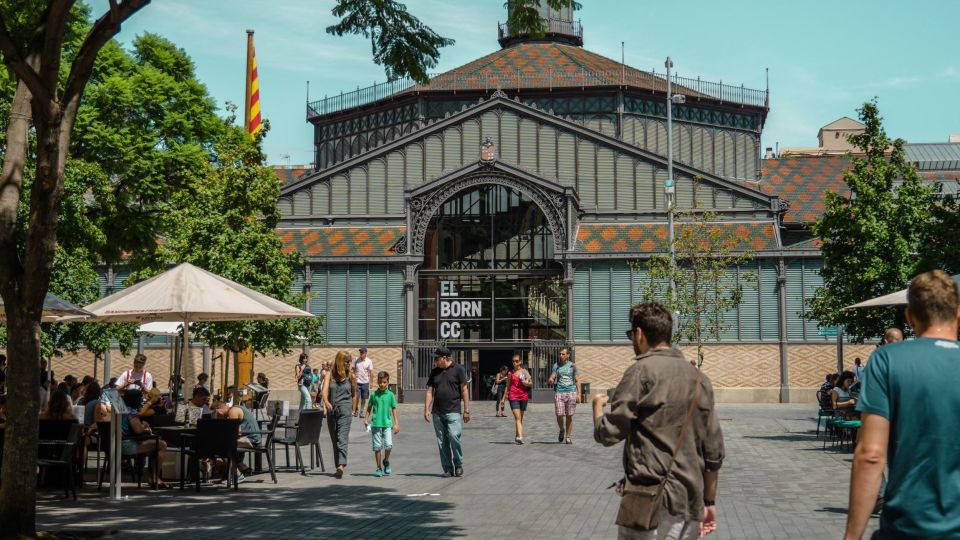
Antoni Gaudí’s architectural marvels in Barcelona captivate visitors with their organic forms and intricate details, showcasing the genius of a visionary architect deeply connected to his Catalan roots. His innovations and Modernista influence are evident in the following ways:
-
Sagrada Família: Gaudí’s unfinished masterpiece, a basilica with a unique design blending Gothic and Art Nouveau styles.
-
Casa Batlló: Known for its colorful facade and undulating shapes, this residential building is a testament to Gaudí’s creativity.
-
Park Güell: A public park featuring vibrant mosaics, whimsical structures, and lush gardens, reflecting Gaudí’s love for nature in architectural form.
These landmarks not only represent Gaudí’s architectural prowess but also highlight the Modernista movement’s impact on Barcelona’s cityscape.
Lluís Domènech I Montaner’s Legacy
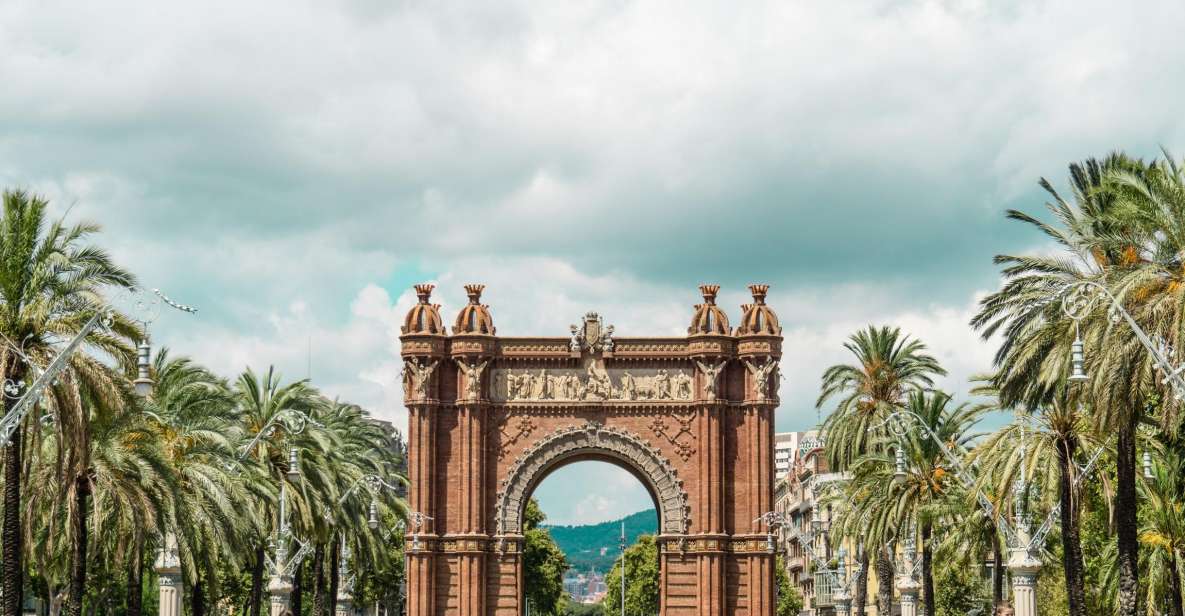
Lluís Domènech i Montaner’s architectural legacy in Barcelona embodies a harmonious fusion of Catalan identity and Modernista aesthetics, shaping the city’s cultural landscape with distinctive buildings that exude elegance and innovation. His works, such as the Palau de la Música Catalana and the Hospital de Sant Pau, showcase intricate details, colorful mosaics, and sculptural elements that exemplify his unique style. Montaner’s legacy exploration reveals a deep influence on Barcelona’s architectural scene, inspiring future generations with his forward-thinking designs. The combination of historical references and artistic vision in his buildings continues to captivate visitors, offering a glimpse into the rich tapestry of Catalan heritage and the evolution of Modernisme in architecture.
| Legacy Exploration | Architectural Influences |
|---|---|
| Palau de la Música Catalana | Intricate details and colorful mosaics |
| Hospital de Sant Pau | Sculptural elements and innovative design |
Evolution of Eixample District
The vibrant Eixample district of Barcelona pulsates with a dynamic history of architectural evolution and urban transformation. This area has witnessed significant changes over the years, shaping the cityscape into what it’s today. The evolution of the Eixample district is a testament to Barcelona’s urban development, showcasing a blend of traditional and modern influences.
Key aspects of this evolution include:
-
Innovative Urban Planning: The implementation of Ildefons Cerdà’s visionary urban plan laid the foundation for the district’s development.
-
Architectural Diversity: The Eixample district boasts a mix of architectural styles, reflecting different periods of growth and change.
-
Cultural Significance: The evolution of Eixample highlights Barcelona’s rich history and the city’s continuous strive for innovation in urban design.
Secret Gardens and Renovated Markets
Nestled within Barcelona’s Eixample district are hidden oases of tranquility and vibrant marketplaces that have been revitalized to showcase a harmonious blend of history and modernity. Exploring hidden gems in these secret gardens reveals a peaceful escape from the bustling city streets.
These lush green spaces offer a serene setting for relaxation and contemplation, providing a glimpse into Barcelona’s rich cultural heritage. On the other hand, the market transformations in the district bring a dynamic atmosphere where traditional meets contemporary. Renovated markets now serve as hubs of activity, offering a diverse range of local products and culinary delights.
Visitors can enjoy the lively ambiance while experiencing the fusion of old-world charm with modern flair.
Unique Urban Layout Perspectives
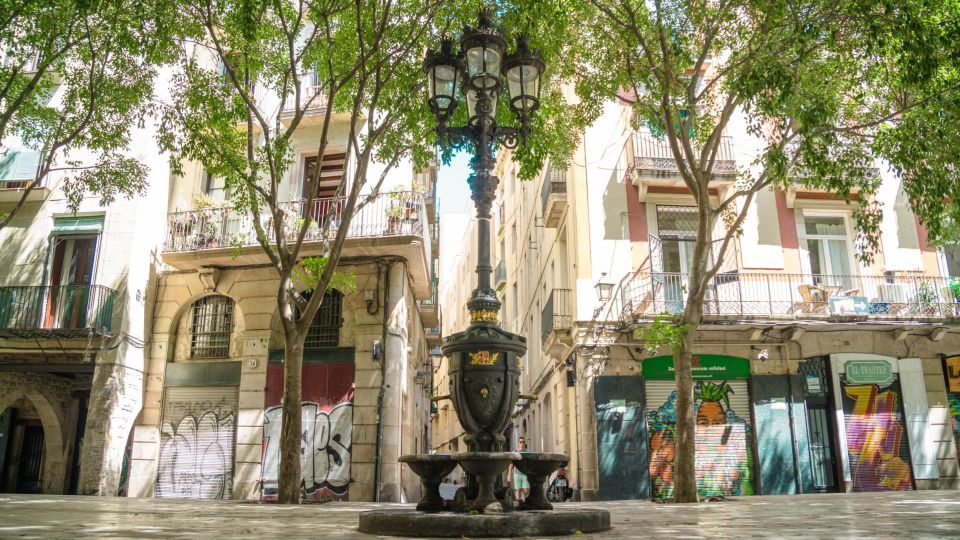
Discover the intricate web of streets and squares that form Barcelona’s Eixample district, offering a fascinating insight into the city’s unique urban layout perspectives.
The urban design in this area is a testament to the visionary plan of Ildefons Cerdà, reflecting a blend of functionality and aesthetics.
Within the historical context of the Eixample district, visitors can witness the evolution of Barcelona’s urban landscape over the past 150 years, showcasing a harmonious mix of tradition and modernity.
The carefully planned grid system, coupled with the incorporation of green spaces and wide avenues, highlights the meticulous attention to detail that has shaped the city’s urban design philosophy.
Architectural Outcome of Plan Cerda
Amidst the intricate urban layout of Barcelona’s Eixample district, the architectural outcome of Plan Cerda unveils a captivating fusion of historical significance and innovative design.
Plan Cerda, envisioned by Ildefons Cerdà, revolutionized urban planning by introducing a grid pattern with octagonal blocks and chamfered corners, emphasizing open spaces and efficient traffic flow.
This plan not only shaped the physical landscape but also influenced the architectural design of buildings within the district. The result is a harmonious blend of functionality and aesthetics, where Modernista buildings stand alongside traditional structures, showcasing a unique mix of styles.
The legacy of Plan Cerda can be seen in the seamless integration of urban design principles with architectural creativity, making it a pivotal chapter in Barcelona’s architectural evolution.
Modernista Influence in Eixample
The Modernista influence in Barcelona’s Eixample district is evident through the intricate facades and ornate details adorning many of the buildings. This architectural style, championed by figures like Antoni Gaudí and Lluís Domènech i Montaner, has left a lasting impact on the urban development evolution of the area.
Key elements of the Modernista architecture in Eixample include:
- Elaborate organic forms and motifs inspired by nature.
- Innovative use of materials such as trencadís (mosaic of broken tiles) and wrought iron.
- Integration of decorative elements with structural components to create a harmonious whole.
These features not only contribute to the aesthetic beauty of the district but also reflect the innovative spirit of the architects who shaped Barcelona’s urban landscape.
Common questions
What Are Some Lesser-Known Facts About Ildefons Cerdà, the Visionary Behind the Plan Cerda?
Incorporating lesser-known facts about Ildefons Cerdà, the visionary behind Plan Cerda, the answer highlights his significant role in Barcelona’s urban planning. Cerdà’s innovative approach shaped the Eixample district, reflecting his foresight in urban development.
How Has the Eixample District Evolved Culturally Over the Past Century Alongside Its Urban Development?
The Eixample district in Barcelona has seen remarkable cultural evolution alongside its urban development. Over the century, it has transformed into a vibrant hub blending tradition with modernity, showcasing a unique fusion of local heritage and metropolitan flair.
What Are Some Hidden Gems or Lesser-Known Places to Visit in the Eixample District That Are Not Typically Mentioned in Tourist Guides?
Hidden gems in the Eixample district include off the beaten path spots like tucked-away tapas bars showcasing local traditions. Explore lesser-known courtyards reflecting cultural influences, providing a unique perspective beyond tourist guides.
How Has the Local Community in Eixample Influenced the Architectural Designs and Urban Planning of the District?
The local community in Eixample has deeply influenced the architectural designs and urban planning of the district. Their input reflects a blend of traditional Catalan elements with modernist innovations, creating a unique and vibrant cityscape.
Can You Provide Insights Into the Economic and Social Impact of the Plan Cerda on Barcelona’s Development as a Modern Metropolis?
The Plan Cerda had a profound impact on Barcelona’s economic growth and social transformation. This visionary urban planning initiative shaped the city’s modern metropolis identity, blending urban layout with cultural heritage through master architects’ works.
Last Words
To sum it up, exploring Barcelona’s Eixample district is a must for those seeking a deeper understanding of the city’s architectural and urban development history.
From the visionary Plan Cerda to the iconic works of Gaudí and Domènech i Montaner, this tour offers a fascinating glimpse into the evolution of this vibrant area.
Don’t miss the chance to uncover the secrets and hidden gems that make Eixample a true gem of Barcelona.